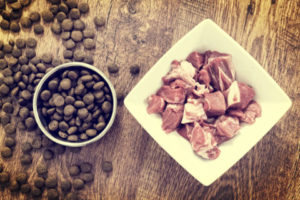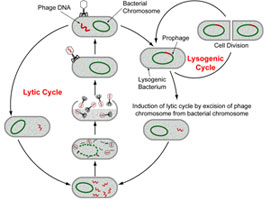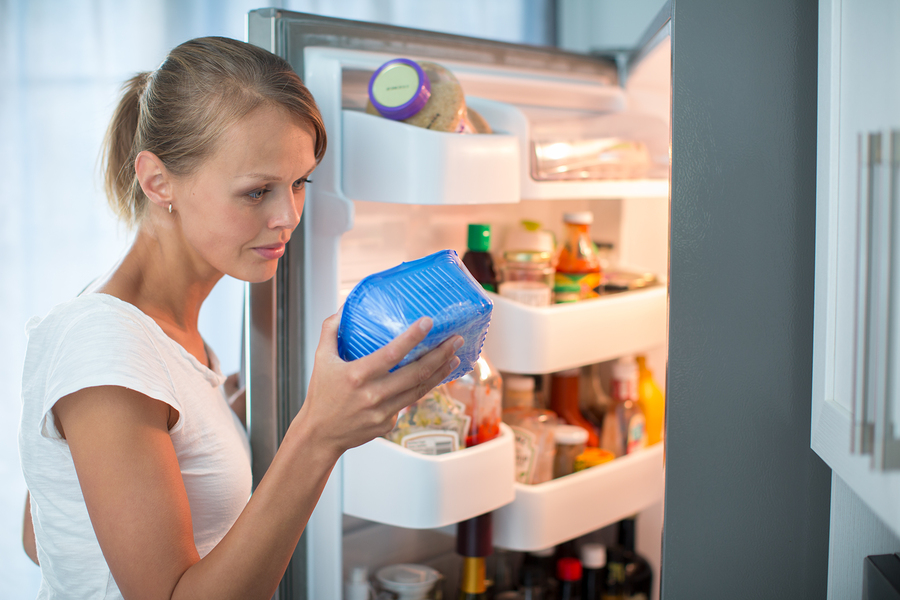Ensuring Pet Food Safety: Big Challenges, Steady Results
By: Leah Roberts | April 29, 2016
An increase in pet ownership over the past few years has helped focus attention on the issue of pet food safety: it’s big business and a big concern for people, as well. According to the American Pet Products Association, the 2015-2016 APPA National Pet Owners Survey reported that $60.28 billion was spent on pets in the U.S., with 65% of households owning a pet—a 25% increase over the past five years.
Pet owner spending includes simple food and grooming expenses as well as innovative and specialized premium products. With gourmet delicacies and “holistic” premium food choices now available, the global pet food market is expected to reach USD $74.8 billion by 2017.
Nobody thinks to ask about the family pet.
GfK, Germany’s largest market research firm released data last summer that revealed Americans are spending more money on raw food for their pets. Over the course of a year, retail sales of raw, freeze-dried dog and cat food spiked 64% and the sale of raw, frozen pet food jumped 32%. But according to the U.S. Food and Drug Administration’s (FDA) Pet Food Study, the trendy, raw food that pet owners are obsessing over might actually be a human hazard.
Raw foods are more likely than processed foods to test positive for Salmonella and Listeria monocytogenes because they haven’t gone through a “kill step,” such as heat processing.
Pet owners are thus more susceptible to contracting foodborne illnesses when exposed to and handling these raw pet foods, especially since many sick pets don’t show signs or symptoms of Salmonella poisoning. In the past year, there’s been an uptick in the number of FDA recalls of raw pet food because of contamination with listeria, salmonella and E. coli.
Darin Detwiler is an FDA-Certified Food Science Educator and a policy advisory who also teaches at Northeastern University in Boston, Massachusetts. He notes that cross-contamination is an important issue, especially where someone has become ill despite the fact that they never consumed undercooked meat or food that was otherwise suspect.
“Nobody thinks to ask about the family pet,” he says, “and no one thinks about the impact of canned pet food and the ingredients that are in it.”
Detwiler notes that people can purchase tuna for cats, for example, that is not fit for human consumption, and when people get sick as a result of contact with their animals the information typically doesn’t get recorded by public health officials.
The pet food industry in North America has been heavily scrutinized by the FDA and the Canadian Food Inspection Agency (CFIA) since the largest pet food recall in 2007, initiated by Menu Foods. This recall highlighted the issue of food safety in an increasingly globalized food chain, and drove pet food manufacturers and government regulators to improve pet food safety standards and preventive controls.
The European Pet Food Industry Federation (FEDIAF) had already adopted an internal set of standards in 2001, prior to the recall, to prevent potential difficulties during the production process and meet their commitment to safety and quality. The standards are strict and have resulted in a decrease in the number of overall food hazard notifications under the Rapid Alert System for Food and Feed (RASFF) since 2011.
In September, 2015, after four-and-a-half years of questions and concerns, the FDA finalized the first food safety regulations under the Food Safety Modernization Act (FSMA) most relevant to pet food safety: Current Good Manufacturing Practices (GMP) and Hazard Analysis and Preventive Controls for Food for Animals (HACCP). Pet food manufacturers in the U.S. have up to three years to comply with good hygiene practices, pet control, proper cleaning and maintenance of plants and grounds and regular testing of control points.
Many pet food manufacturers are now members of the First Alert Pet Food Recall Program, a voluntary coalition of responsible pet food producers who agree to alert their customers and consumers in the event any product is involved in a recall. And the Petfood/Dog Food advisor website is also an invaluable resource for recalls in the pet food space.
Frank Monteleone, President of FoodSafe Technologies, says that the pet food industry as a whole is aware of the challenges and many companies are working hard to ensure a safe food supply for pets. His company makes a natural antimicrobial that is used on kibbles and raw proteins, among other products.
“We’re pleased that the industry is jumping up and facing the safety issue,” he says. “But it’s quite challenging given the constraints of the situation and the levels of contamination in raw food coming into a pet food plant.”
He notes that the risk is intensified when raw ingredients need to travel long distances before processing.
“It’s good to use trusted names and make sure they have a trusted list of suppliers,” he says.
Increasingly technology is playing a part in food traceability and transparency in the supply chain and companies like Authenticateit Pty Ltd. from Australia are at the forefront with cutting edge innovation that can help pet food manufacturers build trust in their brand.
Authenticateit is a free smartphone app that alerts consumers and brands if a product is counterfeit, potentially unsafe or includes unauthorized goods. It issues a “globally recognisable barcode (GS1 Datamatrix) to each product during production, and then tracks each individual product through its supply chain, right through to the point of sale.
“Each barcode is also linked to a list of all raw materials used in the creation of the product, certification issued to that product, and any other vital information about that product,” explains Carnelian Easton Jones, of Authenticateit.
For pet food brands, certification will become essential in future to ensuring the integrity of supply chains are protected, the ingredients from suppliers are authentic and distribution is traced for quick recall measures.
“There’s a lot of room for growth in the industry and a tremendous amount of challenges,” Monteleone says. “But the industry is responding to it and they’re coming along.”
About the Author
Leah Roberts is an Ontario-based writer and digital marketing expert with a keen interest in food safety and sustainability practices.
We had so many comments on this topic we thought we would share some additional insights:
Sherry Casey, Past Regulatory, Food and Consumer Product Safety Professional and Director at Canada’s largest retailer
-
- In the past few years, retailers who sell private label pet food have begun requesting GFSI certifications and specified vendor operating standards of their manufacturers to assure food quality and safety since the making of these foods are by the same principles as human food.
-
- It’s also important to focus on pet food quality and safety since these foods are generally the sole source of nutrition for our pets
-
- The 2007 recall of products contaminated with melamine demonstrated that manufacturers weren’t aware of all potential risks – HACCP programs were in place to mitigate ingredient-related risks at the manufacturing site, but the ingredient supplier practices or the potential for fraud wasn’t necessarily considered. Manufacturers have since increased due diligence, requiring quality and safety audits of ingredient suppliers; most now test raw materials upon arrival in Canada.
Marty Dever, Communications Manager at Royal Canin
-
- All Royal Canin manufacturing facilities are company-owned and committed to Total Quality Management from raw material sourcing, to manufacturing, distribution and customer satisfaction
-
- We perform regular audits on suppliers to ensure that our foods’ safety, traceability and quality standards are properly met.
-
- Over 65% of our raw materials are sourced from within North America however we will source outside of Canada if the quality of a raw material is higher elsewhere
-
- Food Safety Management Systems reach beyond HACCP and also incorporate management systems principles similar to those found in ISO9001 and FSSC22000. Exhaustive analysis is performed as part of the sampling and monitoring programs on raw materials and finished products, as well as bacteriological testing is performed by accredited third party laboratories on all productions
Cathleen Enright, PhD, President and CEO of Pet Food Institute (PFI)
-
- Pet Food Institute members make up 98% of all pet food products in the U.S.
-
- FSMA represents the most fundamental change in food safety regulation in over 70 years and it requires closer ties between food makers and their ingredient suppliers to ensure ingredient and finished product safety
-
- We held webinars and meetings to prepare pet food makers to comply with FSMA and are active in the Food Safety Preventive Controls Alliance (FSPCA), a coalition working to develop and deliver a standardized curriculum to assist the food industry in meeting the 2017 implementation deadline
Glenn Forrester, Owner of Pets 4 Life
-
- Many measures are in place to prevent contamination of ingredients: thorough sanitation of all equipment and surfaces using a quaternary ammonia disinfectant, food safety training for staff, random testing conducted by a third party accredited lab, temperature controlled carriers for distribution and food is processed in a semi-frozen state to limit any opportunity for bacteria growth
-
- All ingredients are grown or raised in Canada
-
- No recalls in 16 years of operation
Dean Ricard, President of Canadian Raw Pet Food Manufacturers (CARPFM) and Owner of Mountain Dog Food
-
- Now that dogs and cats are being fed closer to their biology, and pet owners are looking for raw frozen, dehydrated, freeze dried, low temp processing, or HPP products, a HACCP program is more important than ever.
-
- Most plants making a cooked or kibble product can/will accept bacterially contaminated product for processing since a true ‘kill step’ is involved. The problem is when the contamination works its way through the plant from the input phase to the shipped product. Thus the need for HACCP program to prevent cross contamination
Martha (Marty) Wilder, Executive Director of Pet Foods Association in Canada (PFAC)
-
- Most Canadian pet food manufacturers are exporters and they have to manufacture to the highest standard for where they ship, which is currently the EU
-
- Pet Food Association in Canada members ship products to over 90 countries around the world which means they have to meet at least 90 different sets of import conditions
-
- Most Canadian pet food manufacturers will employ GMP, GFSI and HACCP programs even if they don’t have to in order to ensure their product’s safety.
-
- The final product to be exported has to be certified by the CFIA before it can leave Canada viagra generico italia.
-
- Canadian pet food manufacturers that export are inspected by CFIA and their plant has to be certified first, which includes a review of all of their procedures

-
 FeaturedRisk management
The Cost of a Breach: What a Cyberattack Could Mean for Food Safety Recalls
FeaturedRisk management
The Cost of a Breach: What a Cyberattack Could Mean for Food Safety Recalls
-
 FeaturedRisk management
Securing the Food Chain: How ISO/IEC 27001 Strengthens Cybersecurity
FeaturedRisk management
Securing the Food Chain: How ISO/IEC 27001 Strengthens Cybersecurity
-
 FeaturedRisk management
Revolutionizing Food Safety Training: Breaking Out of the “Check-the-Box” Mentality
FeaturedRisk management
Revolutionizing Food Safety Training: Breaking Out of the “Check-the-Box” Mentality
-
 GFSI Standards
GFSI 2025: Building Trust, Tech-Forward Solutions, and Global Unity in Food Safety
GFSI Standards
GFSI 2025: Building Trust, Tech-Forward Solutions, and Global Unity in Food Safety
-
 FeaturedFood Safety
Integrated Pest Management: Strategies to Protect Your Brand’s Reputation
FeaturedFood Safety
Integrated Pest Management: Strategies to Protect Your Brand’s Reputation
-
 FeaturedFood Safety Culture & Training
No Open Door Policy: Challenges That Impact Pest Control in Food Processing Plants
FeaturedFood Safety Culture & Training
No Open Door Policy: Challenges That Impact Pest Control in Food Processing Plants




